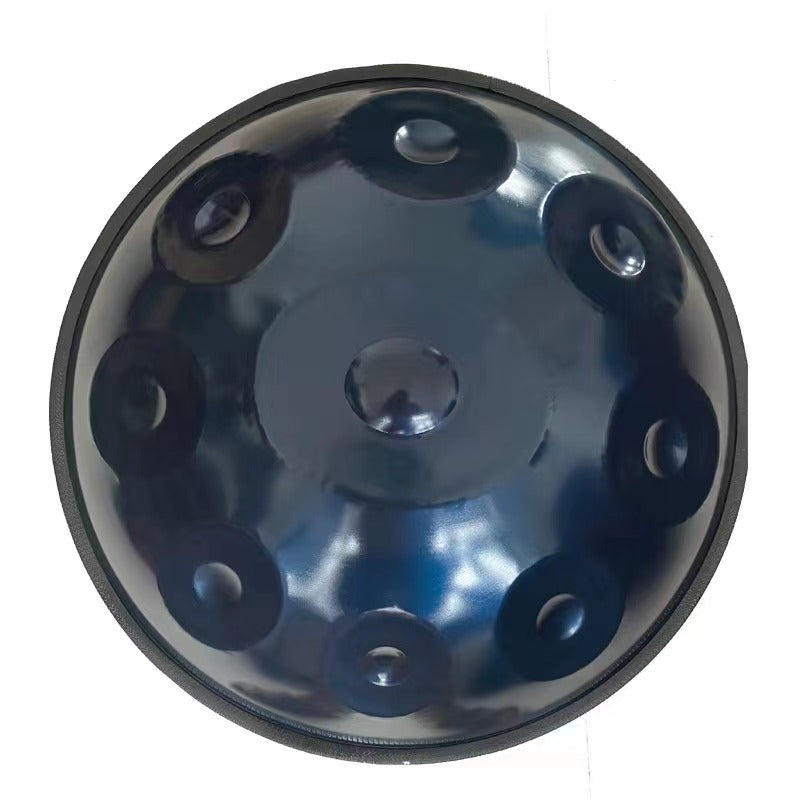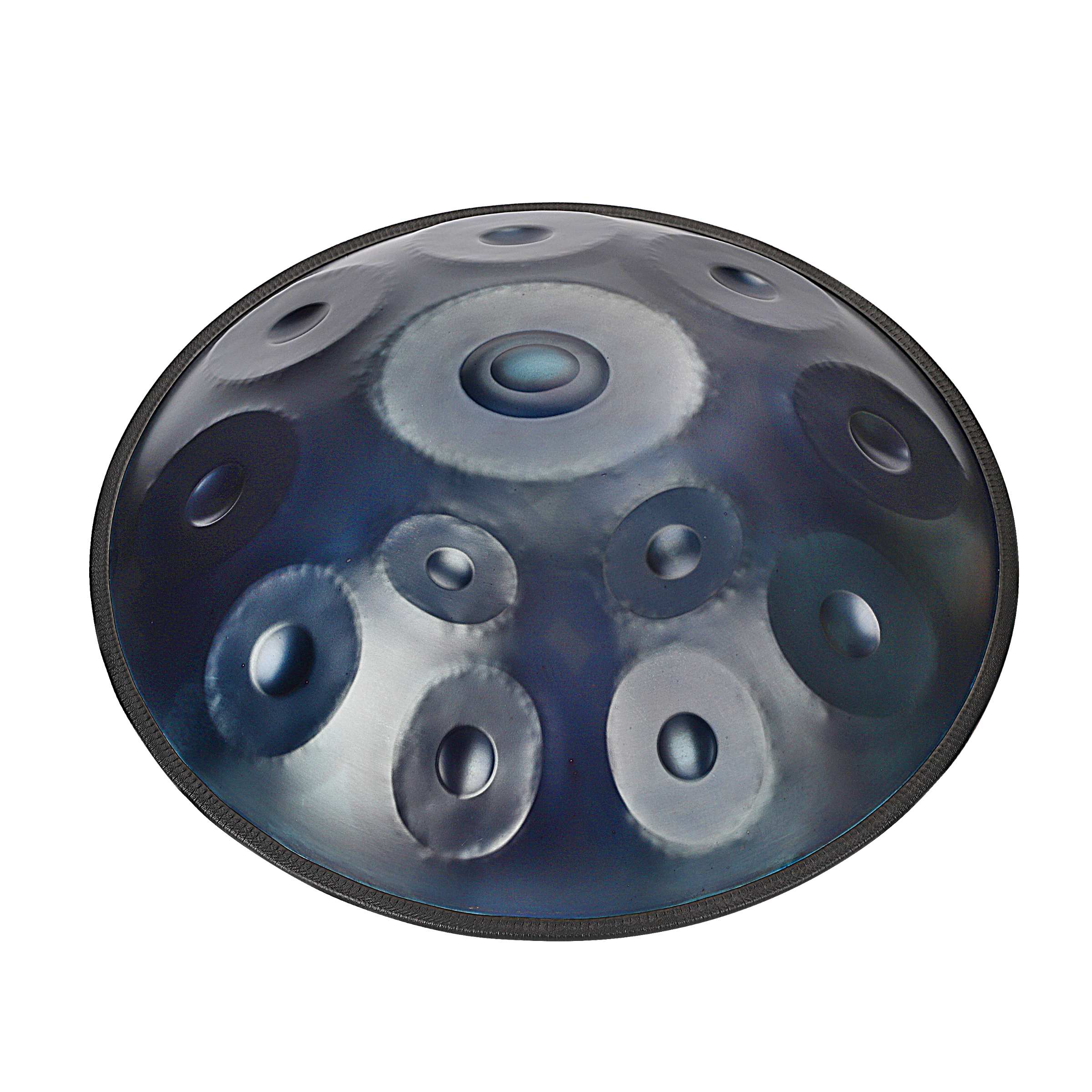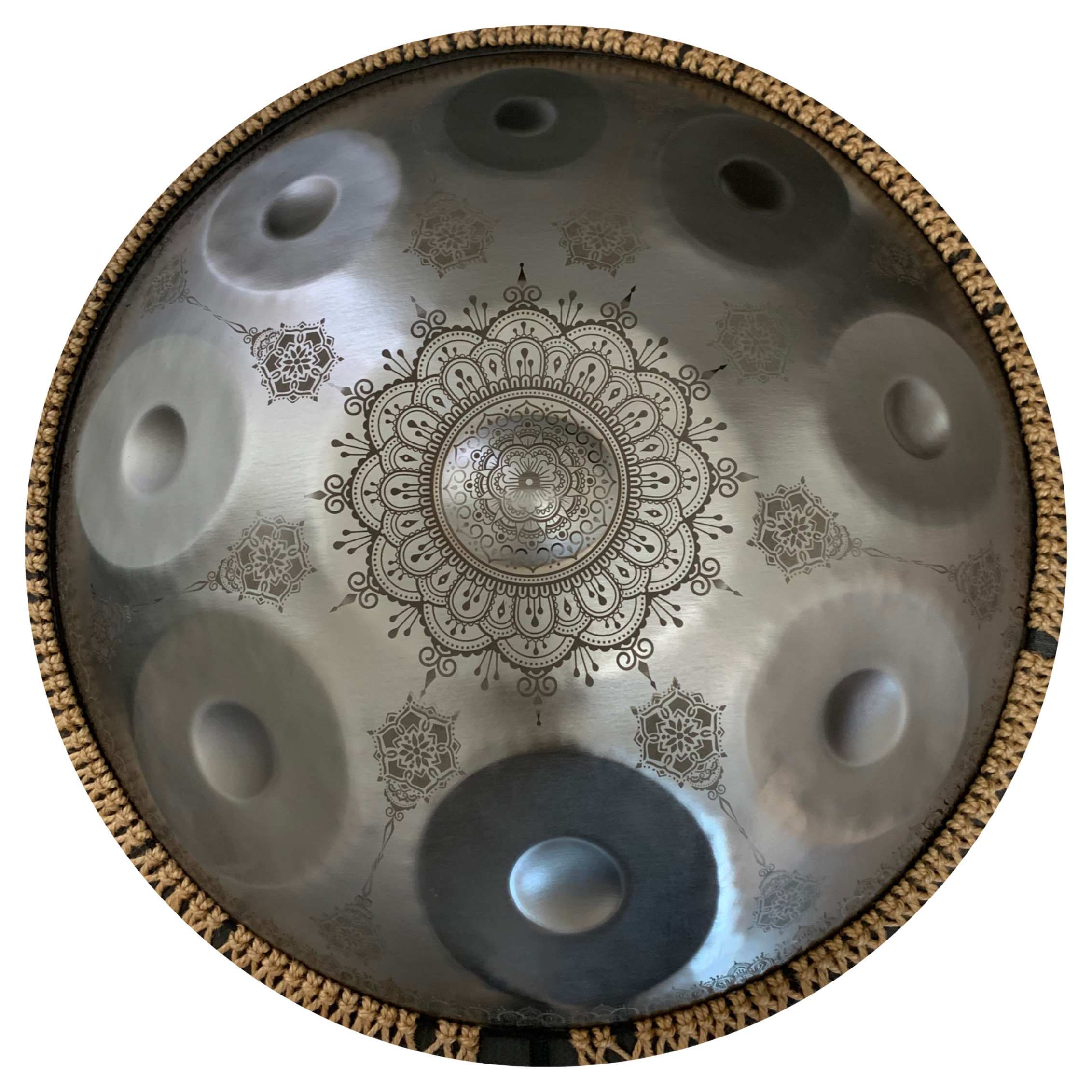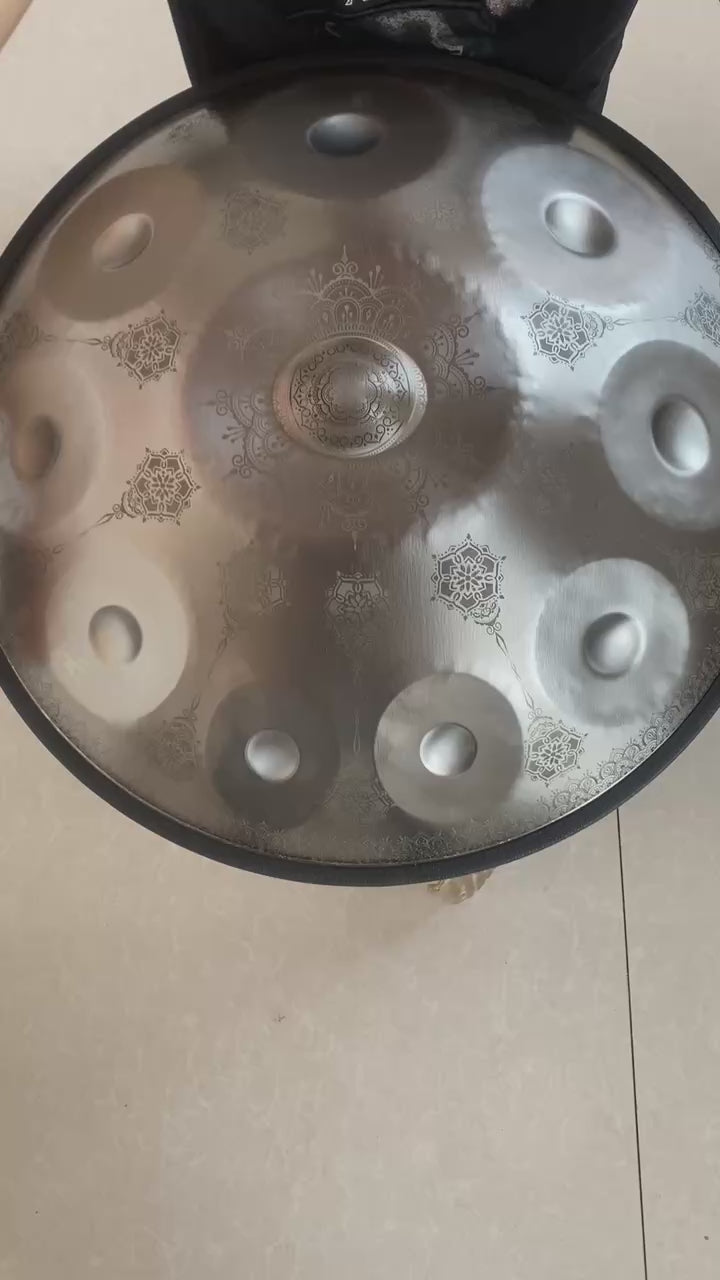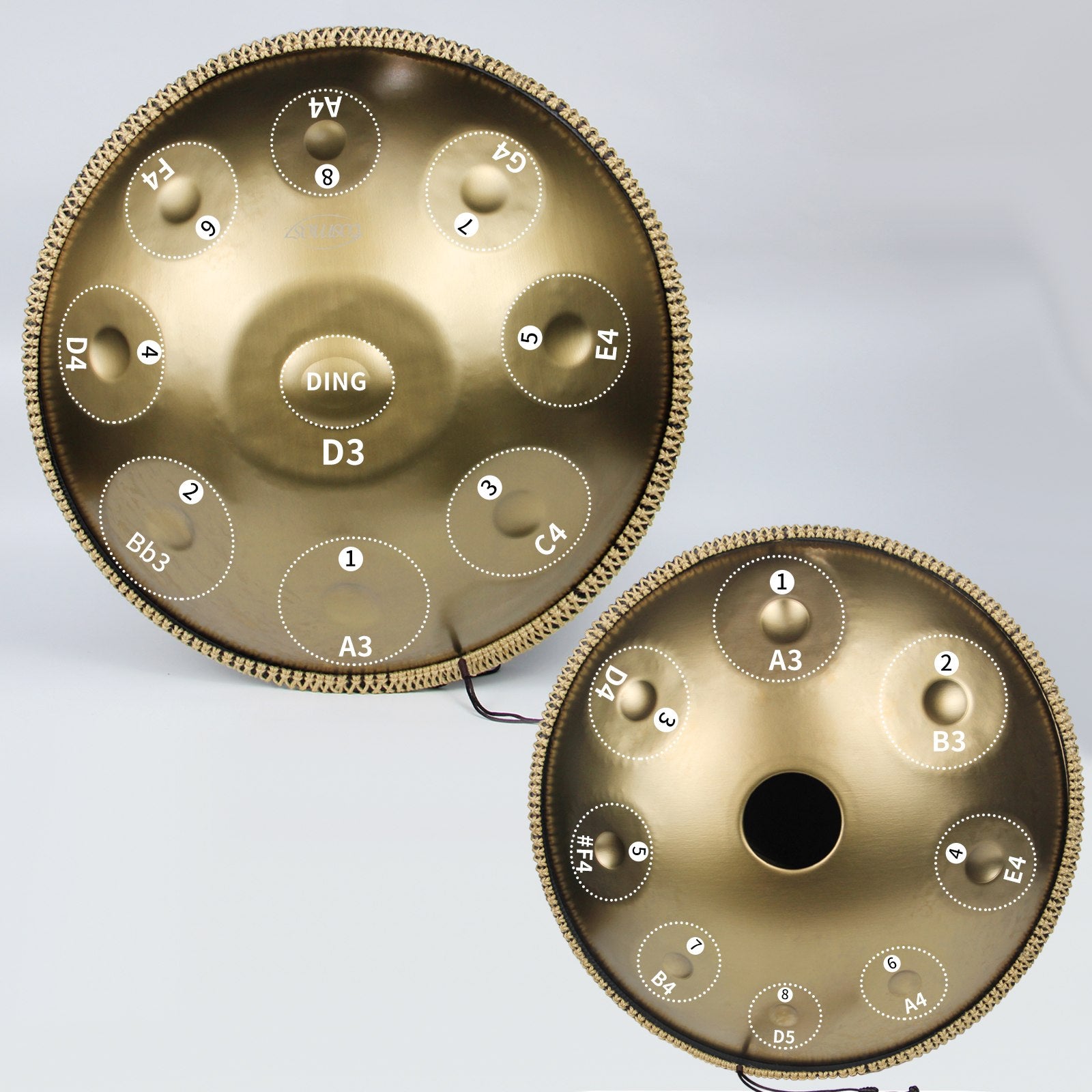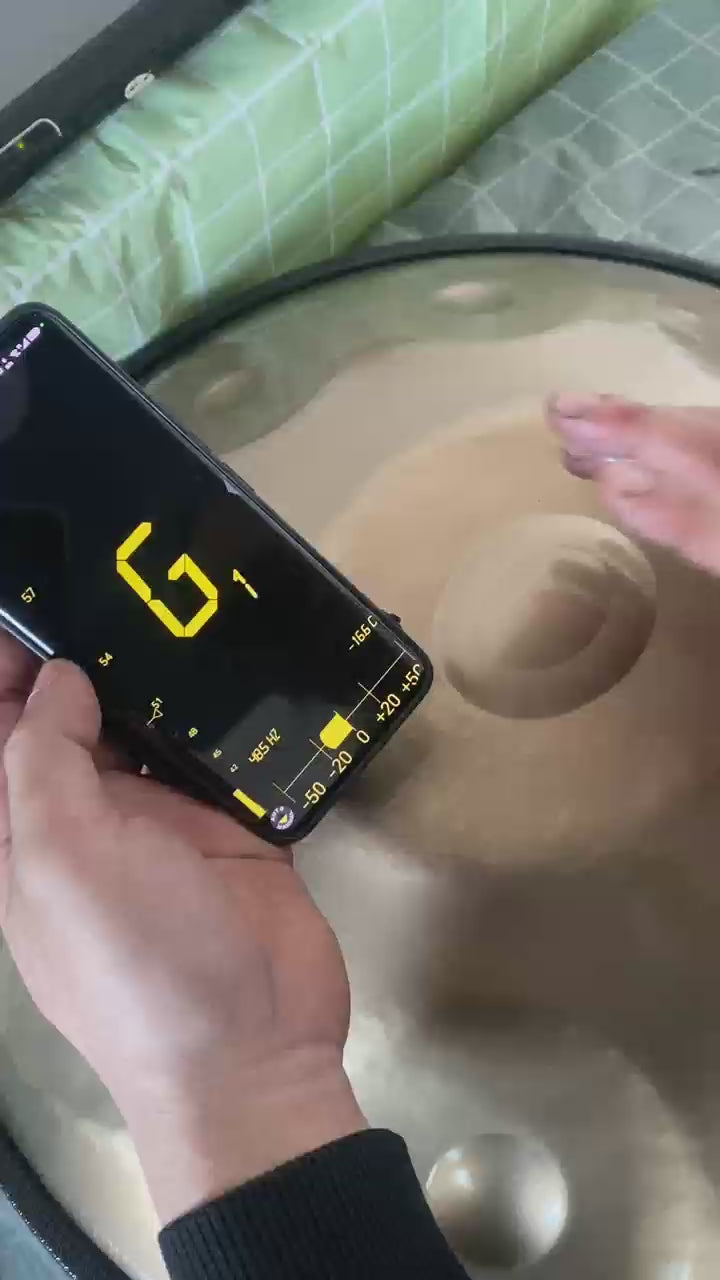Verstehen der Handpan-Töne:
Handpans verfügen typischerweise über eine festgelegte Anzahl von Tönen, die in einem kreisförmigen Muster auf der Spielfläche angeordnet sind. Die Töne sind sorgfältig auf spezifische Tonhöhen gestimmt, was eine melodische Klanglandschaft erzeugt. Das Verständnis der Grundlagen der Handpan-Töne ist entscheidend, um eine informierte Entscheidung über das Design des Instruments zu treffen.
Berücksichtigen Sie Ihre musikalischen Ziele:
Reflektiere über deine musikalischen Ziele und die Art von Musik, die du schaffen möchtest. Wenn du zu komplexen Melodien und komplizierten Kompositionen hingezogen bist, könnte ein Handpan mit mehr Noten geeignet sein. Umgekehrt, wenn Einfachheit und Spielbarkeit Priorität haben, könnte ein Handpan mit weniger Noten passender sein.
Komplexität und Spielbarkeit ausbalancieren:
Ein Gleichgewicht zwischen der Komplexität der Musik, die Sie produzieren möchten, und der Spielbarkeit zu finden, ist entscheidend. Mehr Noten bieten eine breitere Palette von Möglichkeiten, können jedoch fortgeschrittene Spieltechniken erfordern. Berücksichtigen Sie Ihr Fähigkeitsniveau und Ihr Wohlbefinden mit dem Instrument, wenn Sie die Anzahl der Noten festlegen.
Standardkonfigurationen erkunden:
Handpans kommen typischerweise in verschiedenen Standardkonfigurationen, die von 8 bis 12 Noten oder mehr reichen. Jede Konfiguration bietet eine einzigartige Klangpalette. Zum Beispiel kann ein 8-Noten-Handpan einen minimalistischen und fokussierten Klang bieten, während ein 12-Noten-Handpan eine breitere Palette musikalischer Ausdrucksmöglichkeiten ermöglicht.
Anpassungsoptionen:
Einige
Handpan-Hersteller bieten Anpassungsoptionen an, die es Ihnen ermöglichen, mit ihnen zusammenzuarbeiten, um ein maßgeschneidertes Instrument zu schaffen, das mit Ihrer musikalischen Vision übereinstimmt. Wenn Sie spezifische Vorlieben für die Anzahl der Töne haben, kann es eine spannende Option sein, die Anpassungsmöglichkeiten mit einem erfahrenen Handpan-Hersteller zu besprechen.
